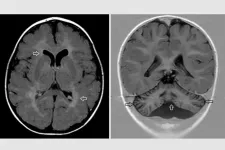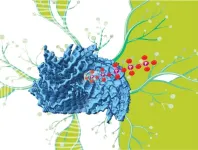(Press-News.org) Early-life sugar restriction – beginning in utero – can protect against diabetes and hypertension later in life, according to a new study leveraging data from post-World War II sugar rationing in the United Kingdom. The findings highlight critical long-term health benefits from reduced sugar intake during the first 1000 days of life. The first 1000 days from conception – from gestation until age 2 – is a critical period for long-term health. Poor diet during this window has been linked to negative health outcomes in adulthood. Despite dietary guidelines recommending zero added sugar in early life, high sugar exposure is common in the U.S. through maternal diet in utero, breastfeeding, and infant formula and solids. What’s more, research suggests that most infants and toddlers consume sweetened foods and beverages daily. To study the long-term health impacts of early sugar consumption, Tadeja Gracner and colleagues leveraged a natural experiment in the U.K.: the end of a decade-long sugar and sweets rationing following World War II in 1953. During rationing, the sugar allowance was comparable to today’s dietary guidelines, including those for pregnant women and young children. However, the end of ratioing led to an immediate, nearly twofold increase in sugar consumption almost overnight. Using U.K. Biobank data on people who were or were not exposed to sugar rationing in utero and early life, Gracner et al. found that early-life exposure to sugar rationing had notable long-term health benefits. According to the findings, people's risk of developing diabetes and hypertension decreased by about 35% and 20%, respectively, and the onset of these diseases was delayed by 4 and 2 years. The protective effect was most pronounced for those exposed to restricted sugar both in utero and postnatally, with in-utero exposure alone accounting for roughly one-third of the risk reduction. The effect was further amplified after 6 months of age, likely coinciding with the introduction of solid foods.
END
Sugar rationing in early life lowers risk for chronic disease in adulthood, post-World War II data shows
Summary author: Walter Beckwith
2024-10-31
ELSE PRESS RELEASES FROM THIS DATE:
Indigenous population expansion and cultural burning reduced shrub cover that fuels megafires in Australia
2024-10-31
Indigenous burning practices in Australia once halved shrub cover, reducing available fuels and limiting wildfire intensity for thousands of years, but the removal of these practices following European colonization has led to an increase in the tinder that has fueled today’s catastrophic megafires, researchers report. The findings suggest that reintroducing cultural burning practices could provide a strategy to curb future fires. “Through detailed histories of Indigenous burning regimes across the world and Indigenous-led collaborations in contemporary wildfire management ...
Echolocating bats use an acoustic cognitive map for navigation
2024-10-31
Echolocating bats have been found to possess an acoustic cognitive map of their home range, enabling them to navigate over kilometer-scale distances using echolocation alone. This finding, recently published in Science, was demonstrated by researchers from the Max Planck Institute of Animal Behavior, the Cluster of Excellence Centre for the Advanced Study of Collective Behaviour at the University of Konstanz Germany, Tel Aviv University, and the Hebrew University of Jerusalem, Israel.
Would you be able to instantly recognize ...
Researchers solve medical mystery of neurological symptoms in kids
2024-10-31
Most people who visit a doctor when they feel unwell seek a diagnosis and a treatment plan. But for some 30 million Americans with rare diseases, their symptoms don’t match well-known disease patterns, sending families on diagnostic odysseys that can last years or even lifetimes.
But a cross-disciplinary team of researchers and physicians from Washington University School of Medicine in St. Louis and colleagues from around the world has solved the mystery of a child with a rare genetic illness that did not fit any known disease. The team found a link between the child’s neurological symptoms and a genetic change that affects how proteins ...
Finding a missing piece for neurodegenerative disease research
2024-10-31
Research led by the University of Michigan has provided compelling evidence that could solve a fundamental mystery in the makeup of fibrils that play a role in Alzheimer's, Parkinson's and other neurodegenerative diseases.
"We've seen that patients have these fibril structures in their brains for a long time now," said Ursula Jakob, senior author of the new study. "But the questions are what do these fibrils do? What is their role in disease? And, most importantly, can we do something to get rid of them if they are responsible for these devastating diseases?"
Although the new finding does not explicitly answer those questions, it may provide a missing ...
Journal of the Royal Society of Medicine ranked in global top ten medical journals
2024-10-31
Notes to editors
For further information please contact:
Karen Nower
Media Office, Royal Society of Medicine
M: +44 (0)7587 084402
E: media@rsm.ac.uk
The Journal of the Royal Society of Medicine (JRSM) has been ranked as one of the world’s top ten general medicine journals for the first time.
Being placed tenth out of 329 ‘general and internal medicine’ titles in Clarivate’s 2023 Journal Citation Reports (JCR), this is JRSM’s highest ever ranking to date, having risen yearly ...
A new piece in the grass pea puzzle - updated genome sequence published
2024-10-31
An international research collaboration has completed the most detailed genome assembly to date of grass pea (Lathyrus sativus).
This new chromosome-scale reference genome published in Scientific Data offers new potential to accelerate modern breeding of this underutilised legume for climate-smart agriculture.
Nearly twice the size of the human genome, the sequence was assembled from scratch and improves on an earlier draft assembly of the vigorous grass pea line LS007.
“We ...
“Wearable” devices for cells
2024-10-31
CAMBRDIGE, MA – Wearable devices like smartwatches and fitness trackers interact with parts of our bodies to measure and learn from internal processes, such as our heart rate or sleep stages.
Now, MIT researchers have developed wearable devices that may be able to perform similar functions for individual cells inside the body.
These battery-free, subcellular-sized devices, made of a soft polymer, are designed to gently wrap around different parts of neurons, such as axons and dendrites, without damaging the cells, upon wireless actuation with light. By snugly wrapping neuronal processes, they could be used to measure ...
Cancer management: Stent sensor can warn of blockages in the bile duct
2024-10-31
Images
Stents to treat various blockages in the human body can themselves become blocked, but a new sensor developed at the University of Michigan for stents that are used in the bile duct may one day help doctors detect and treat stent blockages early, helping keep patients healthier.
Bile duct blockages can cause jaundice, liver damage and potentially life-threatening infections. Conditions that cause the bile ducts to narrow and close, including pancreatic and liver ...
Nov. 14 AARP Author Q&A at GSA 2024 in Seattle: Debra Whitman, Global Aging Expert and Author of ‘The Second Fifty: Answers to the 7 Big Questions of Midlife and Beyond’
2024-10-31
Author Q&A: Debra Whitman, Global Aging Expert and Author of “The Second Fifty”
Date: Thursday, November 14
Time: 4:30 to 5:30 p.m. PT
Location: Seattle Convention Center Arch Building Room 305
Registration: GSA 2024 Annual Scientific Meeting media registration is required to attend this event.
During this meet-the-author media roundtable, Debra Whitman, executive vice president and chief public policy officer at AARP, will discuss her new book, “The Second Fifty: Answers to the 7 Big ...
Autistic psychiatrists who don't know they're autistic may fail to spot autism in patients
2024-10-31
Groundbreaking research exploring the experiences of autistic psychiatrists has revealed that psychiatrists who are unaware that they themselves are autistic may fail to recognise the condition in their patients. The study, conducted by researchers from University College Dublin, London South Bank University, Brighton and Sussex Medical School, is the first of its kind to delve into the lives of neurodivergent psychiatrists. It was published today in BJPsych Open.
"Knowing that you are autistic can be positively life-changing," said the study author Dr Mary Doherty, Clinical Associate ...
LAST 30 PRESS RELEASES:
University of Oklahoma researcher awarded funding to pursue AI-powered material design
Exploring how the visual system recovers following injury
Support for parents with infants at pediatric check-ups leads to better reading and math skills in elementary school
Kids’ behavioral health is a growing share of family health costs
Day & night: Cancer disrupts the brain’s natural rhythm
COVID-19 vaccination significantly reduces risk to pregnant women and baby
The role of vaccination in maternal and perinatal outcomes associated with COVID-19 in pregnancy
Mayo Clinic smartwatch system helps parents shorten and defuse children's severe tantrums early
Behavioral health spending spikes to 40% of all children’s health expenditures, nearly doubling in a decade
Digital cognitive behavioral treatment for generalized anxiety disorder
Expenditures for pediatric behavioral health care over time and estimated family financial burden
Air conditioning in nursing homes and mortality during extreme heat
The Alps to lose a record number of glaciers in the next decade
What makes a good proton conductor?
New science reporting guide published for journalists in Bulgaria
New international study reveals major survival gaps among children with cancer
New science reporting guide published for journalists in Turkey
Scientists develop a smarter mRNA therapy that knows which cells to target
Neuroanatomy-informed brain–machine hybrid intelligence for robust acoustic target detection
Eight SwRI hydrogen projects funded by ENERGYWERX
The Lundquist Institute and its start-up company Vitalex Biosciences Announces Strategic Advancement of Second-Generation fungal Vaccine VXV-01 through Phase 1 Trials under $40 Million Competitive Con
Fine particles in pollution are associated with early signs of autoimmune disease
Review article | Towards a Global Ground-Based Earth Observatory (GGBEO): Leveraging existing systems and networks
Penn and UMich create world’s smallest programmable, autonomous robots
Cleveland researchers launch first major study to address ‘hidden performance killer’ in athletes
To connect across politics, try saying what you oppose
Modulating key interaction prevents virus from entering cells
Project explores barriers to NHS career progression facing international medical graduates
Jeonbuk National University researchers explore the impact of different seasonings on the flavor perception of Doenjang soup
Two Keck Medicine of USC Hospitals named Leapfrog Top Teaching Hospitals
[Press-News.org] Sugar rationing in early life lowers risk for chronic disease in adulthood, post-World War II data showsSummary author: Walter Beckwith





